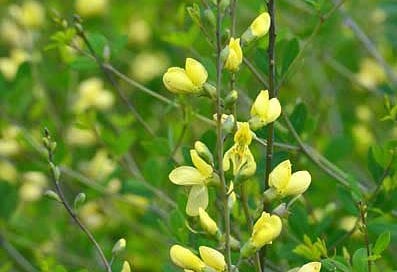Now that we’ve established that Baptisia tinctoria was in fact used as a source of blue, I want to share how it was used and processed. I found this by following several leads in older publications and I’m more than happy to show my trail and will cite my sources at the end of this post.
The first is a publication by the US Dept. of Commerce and Labor, Bureau of Labor, published in 1904, with a part called “The Revival of Handicrafts in America” written by Max West. Mr. West states that “one Kentucky woman has found a wild plant which serves as a satisfactory substitute for indigo, but guards her secret jealously”. 1 Second is Allen H Eaton’s book “ Handicrafts of the Southern Highlands”, published in 1937, where he states that Wilmer Stone Viner, who he calls an authority on natural dyes, feels certain that pioneers used the wild indigo. An old mountain dyer told her that the plant, which bears yellow flowers in August, should be gathered in that month and worked while fresh. 2



